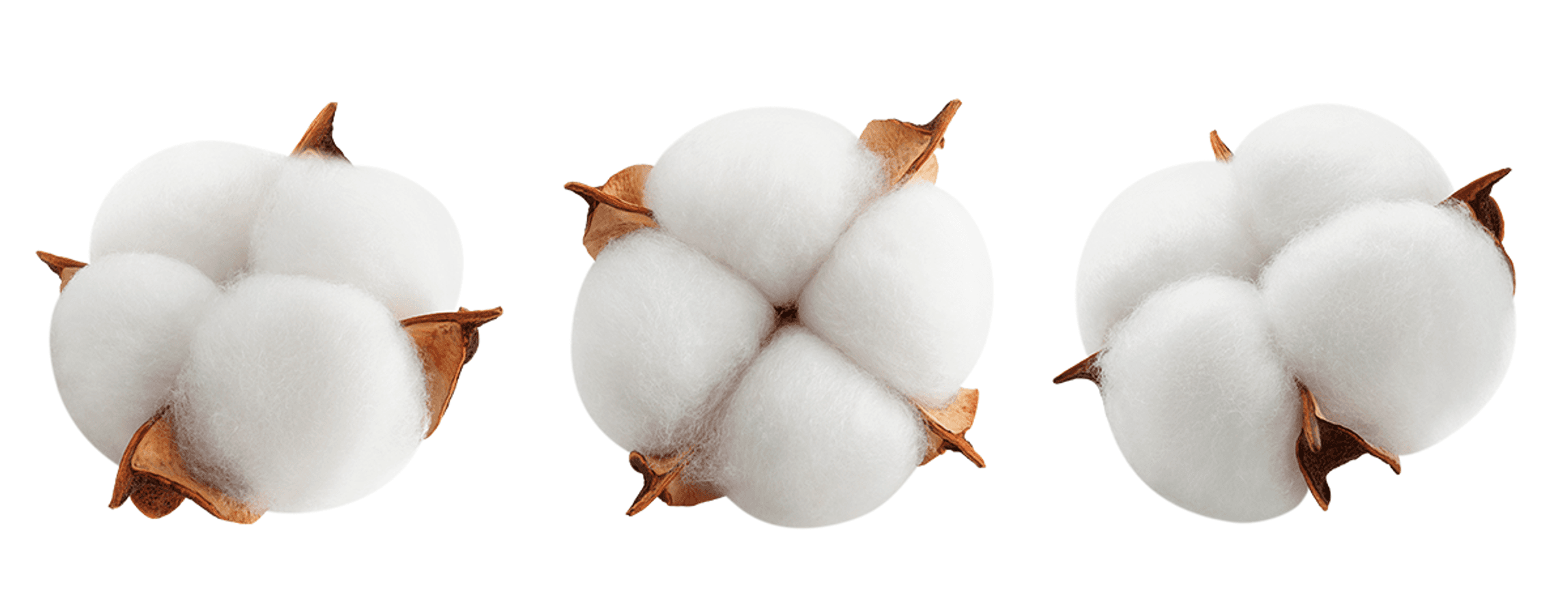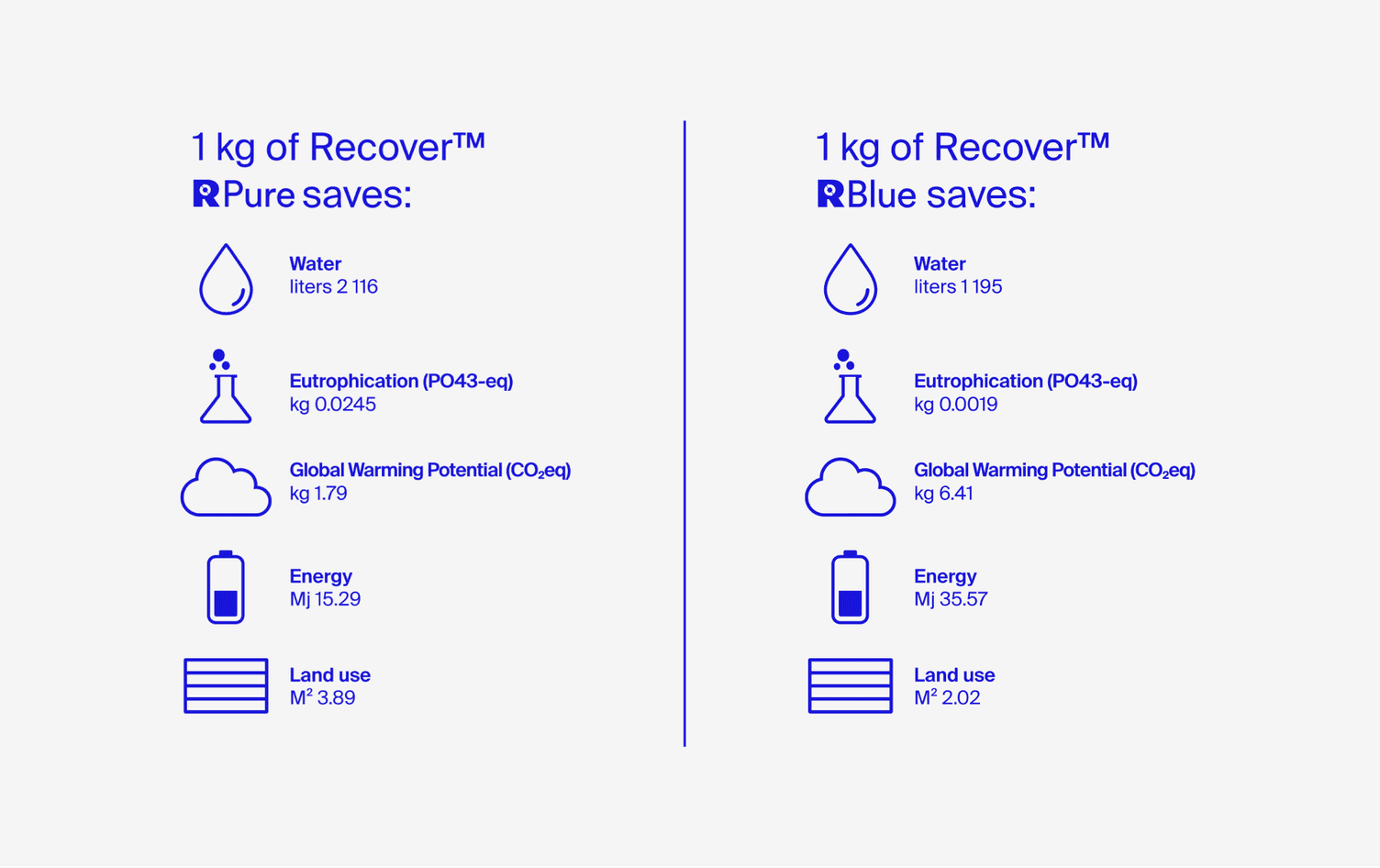Traceability and Transparency - how can they be achieved in the fashion industry?

Site map

Cotton is undoubtedly the most used natural fiber on the global market, and the second most used fiber overall, after polyester. In 2022, Cotton counted for 22% of the global fiber production [1], while polyester made up 54%.
Over the past seventy years, fashion has become accessible to the masses, driving a surge in fiber and textile production. Between 1965 and 2005, global cotton production increased by 130% [2] while polyester has positioned itself as “the king” of the global fiber market landscape. In the same 40 years, its production increased by almost 900%.
This was the beginning of a very vicious wheel: fashion overconsumption. The overproduction of textiles and intensive farming contributes to mountains of discarded fashion items, and the appetite for fashion items is never satisfied, perpetuating the cycle.
Although cotton production has remained stagnant over the past 20 years, averaging around 24 million tons annually, polyester production just kept increasing and surpassed 85 million tons in 2022, according to ICAC.
As one of the most widely used fibers in the industry - and our baseline for calculating our environmental savings at Recover™ - the question arises: what is cotton’s environmental impact? Let’s break it down.
One of the most common misconceptions about cotton is that it requires a lot of water to grow, often labeled as a “thirsty crop”. But it’s not that simple.
The water footprint of cotton products is largely dependent on the growing region. To produce one kilogram of cotton lint, you need anywhere from 2,000 to 18,000 liters of water – both irrigation water (also called blue water) and rainwater (also called green water). This applies to both conventional cotton and organic cotton. For context, one kilogram of cotton lint roughly translates to one t-shirt and one pair of jeans. [3]
This is a broad range – the amount of freshwater required can vary significantly from one region to another, even within the same country. For example, in the United States, cotton farmers in the southeast use 234 liters of irrigated water per kg of cotton, whereas those in the west use around 3,272 liters.
There are many datasets to choose from when calculating cotton’s water impact. At Recover™, we chose the Textile Exchange global average data for freshwater -2,120 liters of water- to calculate our environmental savings. This is the fairest and most conventional dataset to compare our recycled cotton performance against a virgin equivalent.
Globally, agricultural land area covers approximately five billion hectares [4]. Out of this vast expanse, cotton crops occupy 32 million hectares, according to ICAC. That’s less than 1% of the world’s agricultural land use.
When it comes to growing cotton, the land required for each kilogram of cotton varies significantly. On average, it takes between 3,89 m² to 14,54 m² of land to produce one kilogram of cotton [5]. Here again, the amount of farmland used varies a lot depending on the region and the type of cotton.
At Recover™, we compare against the land use of conventional cotton in the rest of the world category from EcoInvent 3.8, which is the lowest of the dataset with 3,89 m². This comparison provides a fair benchmark for evaluating the impact of our recycled cotton.
For conventional seed-cotton production, most of the CO₂ emissions are caused by products that are input from the techno sphere, meaning caused by external products and processes related to technology and industry. These are mainly fertilizer inputs, agricultural machinery usage, and other substances or pesticides. Most of the remaining carbon emissions are direct emissions of CO₂ to air due to land transformation.
According to the comparative study of our recycled cotton impacts verified by EcoReview, producing one kilogram of conventional cotton has a global warming impact of 1.97 kg CO₂-equivalent (CO₂-eq). This is the baseline we use to compare the environmental savings of our recycled cotton fiber.
However, it is also crucial to remember the CO₂ emissions generated during the entire manufacturing process – from spinning to dyeing and finishing – are the most significant in the entire apparel’s lifetime emissions.
When we substitute conventional cotton with recycled cotton, we effectively offset the resources used in traditional cotton production—such as land, water, fertilizers, chemicals, and carbon emissions. By recycling cotton, we not only divert textile waste from landfills but also help meet the growing demand for more circular solutions.
As a reminder, one kilogram of Recover™ recycled cotton fiber saves up to:

As well as looking at the environmental impacts of cotton, we must mention its social implication and the dynamics it creates in the world we live in.
In 2022, the top five producers of cotton were China, India, the USA, Brazil, and Australia (very closely followed by Pakistan). However, their post-harvest strategies differ drastically.
China, at the top of the ranking in production, does not export much of its cotton lint; rather, it imports even more to fuel its vertical textile manufacturing industry – from spinning, to weaving, to garment production.
Other countries, like the USA, Brazil, and Australia, dedicate most of their production to exportation. In these countries, the average land holding is 433 hectares [6], which is about 1.27 times the size of Central Park in New York.
This is not the reality for most cotton farmers in the world. The global average cotton farm is just about 1.32 hectares. Why? Because in major cotton-producing countries like India, Pakistan, or China – smallholder harmers are the backbone of the industry.
Cotton has been cultivated for thousands of years and plays a huge part in the global economy, contributing to the livelihoods of a very significant part of the population. Discover Natural Fibres Initiative, in its World Natural Fibre Update in January 2024, estimated that cotton contributes to around 24 million households and generates 100 to 150 million jobs - about 1.8% of the world’s population.
With such a big influence economically and socially, many challenges would arise from banning its farming. As Veronica Bates Kassatly and Terry Townsend pointed out [7], it would save no water, and simply cause reduced economic and employment activity as “farmers would move to the next most profitable crop.”
Our environmental savings at Recover™ are not a tool to encourage the banning of virgin cotton. We rather advocate for optimizing its use and the resources required for its production.
By partly replacing virgin cotton with recycled cotton in a garment, we can make a tremendous positive impact without compromising durability or performance. We encourage and promote the intelligent use of our planet’s natural resources to keep textiles out of landfills.

Cotton has been used for centuries and possesses unique, often unmatched properties for apparel. It is for that reason that it’s the second most used fiber globally.
Its comfort, softness, breathability, and durability make it ideal for many product categories, including casual wear, denim, undergarments, activewear, and home textiles. Cotton has few alternatives in the market. Mechanically recycled cotton is one as it retains these properties.
It is also important to note that the cotton industry is not standing still. Advances in farming practices are remarkable, and the data we present today might be obsolete in five years. Many farmers are transitioning to organic and regenerative practices to improve their methods. Additionally, innovative solutions, such as lab-grown and greenhouse-grown cotton, are rapidly transforming the textile landscape.
Yet overproduction in fashion is having an impact on our planet like never before. Recycled cotton is one of the best solutions to avoid overconsumption and favor the correct use of our planet’s natural resources, as replacing part of the virgin cotton in a garment can have tremendous benefits for our planet.
At the forefront of these efforts is Recover™, a brand committed to using our planet’s natural resources wisely and promoting transparency as a tool to achieve our objective: Circular fashion for all.
1. Textile Exchange, Materials Market Report (2023)
2. International Cotton Advisory Committee (ICAC), World Textile Demand estimates (2023)
3. International Cotton Advisory Committee (ICAC), Cotton Data Book (2022)
4. Veronica Bates Kassatly and Terry Townsend, ESPR: Summary of inconsistencies and potential deficiencies in the Preliminary Study on New Product Priorities – with specific reference to Textiles and Footwear (2024)
5. Transformers Foundation, Cotton: A Case Study in Misinformation (2021)
6. Food and Agriculture Organization of the United Nations, Land use in agriculture by the numbers (2020)
7. Recover™, LCA Spain verified by EcoReview (2022)

